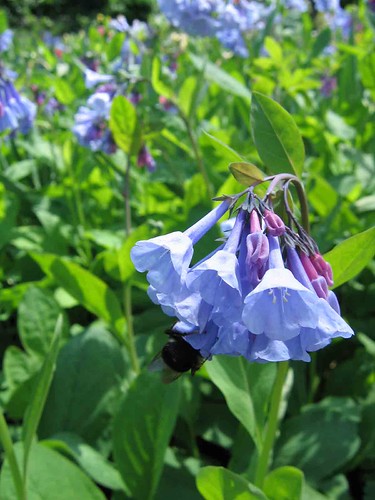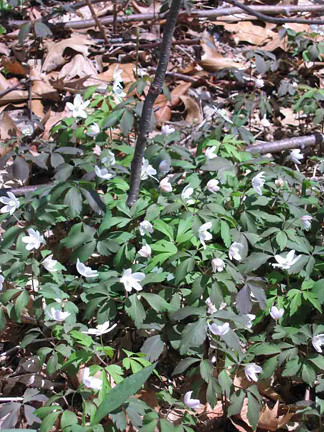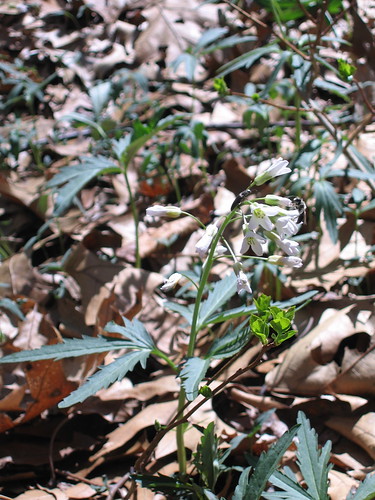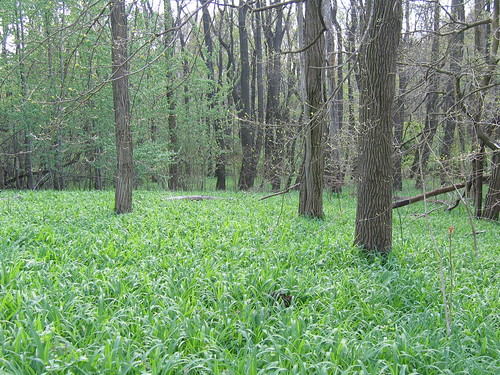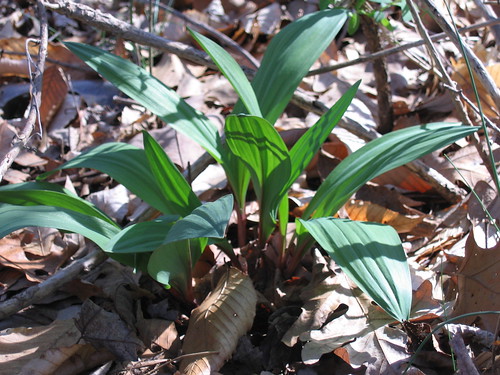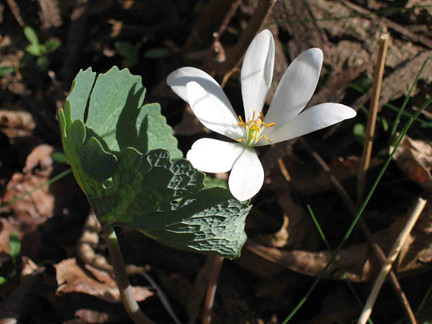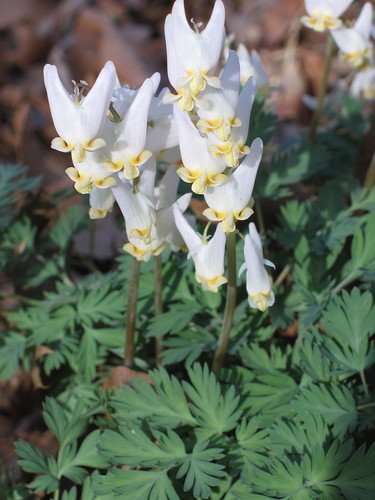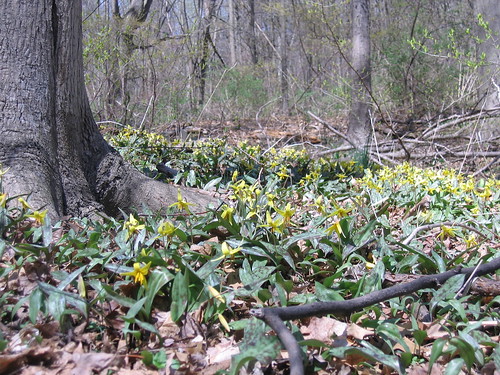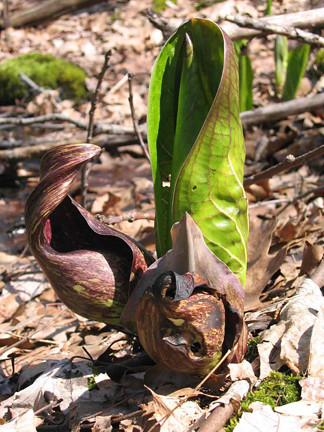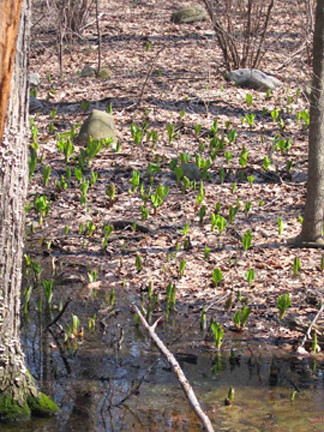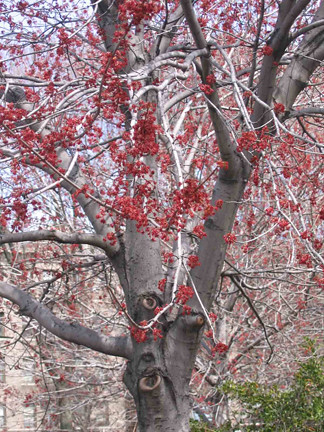The secret section in Central Park's conservatory garden
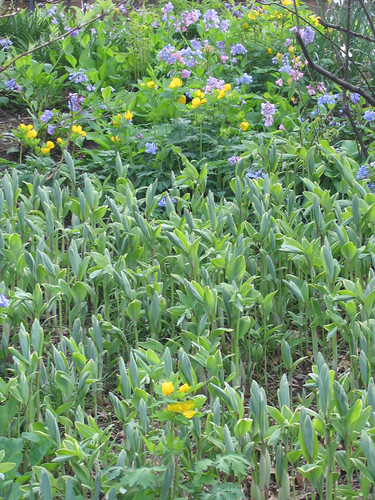 Plants native to New York on display in Central Park
Plants native to New York on display in Central Park
The Conservatory Garden at Fifth Avenue and 104th Streets happens to be directly opposite my office. I hardly ever go in there, though, since as the weather warms up, I have natural areas to attend to. But today, mired in office work, I took a break from the desk and walked over through the big iron gates.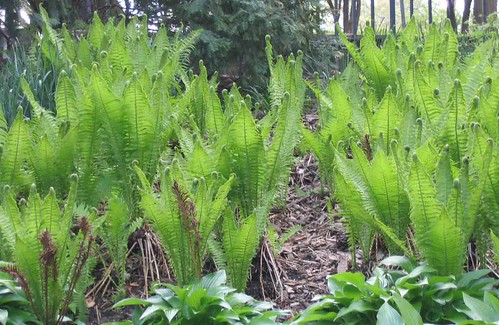
emerging ostrich fern (Mattheuccia struthiopteris) looks majestic. Note last year's reproductive fronds. In the wild, this fern is native & very rare in NYC, found reportedly in Pelham Bay Park and nowhere else. It is rare in New York State.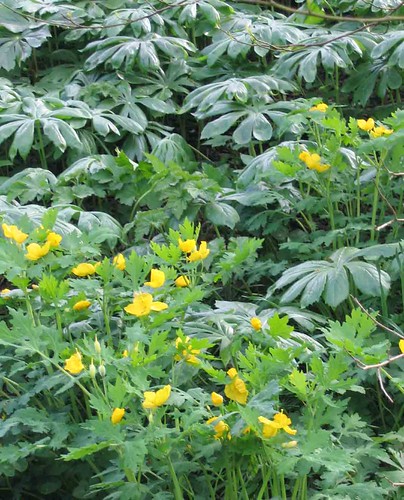
Mayapple (Podophyllum peltatum) and wood poppy (Stylophorum diphyllum), both are shade tolerant native plants found on forest floors. Note that the poppy has an exotic doppleganger, celandine (Chelidonium majus), which can be invasive. When buying native plants, ask for Latin names to be sure what you are getting.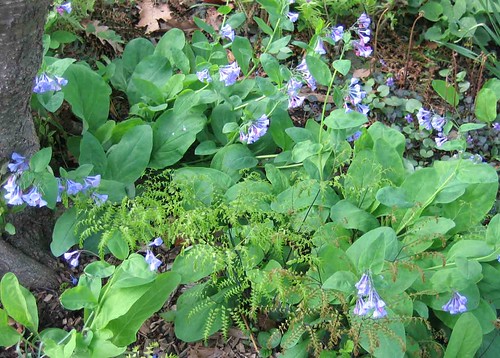
Virginia bluebells (Mertensia virginiana) & unfurling fronds of maidenhair fern (Adiantum pedatum).
